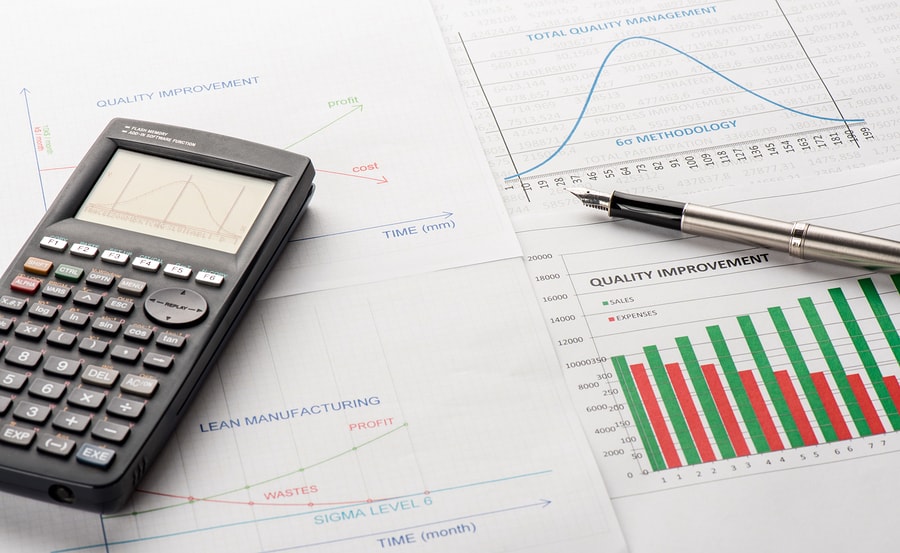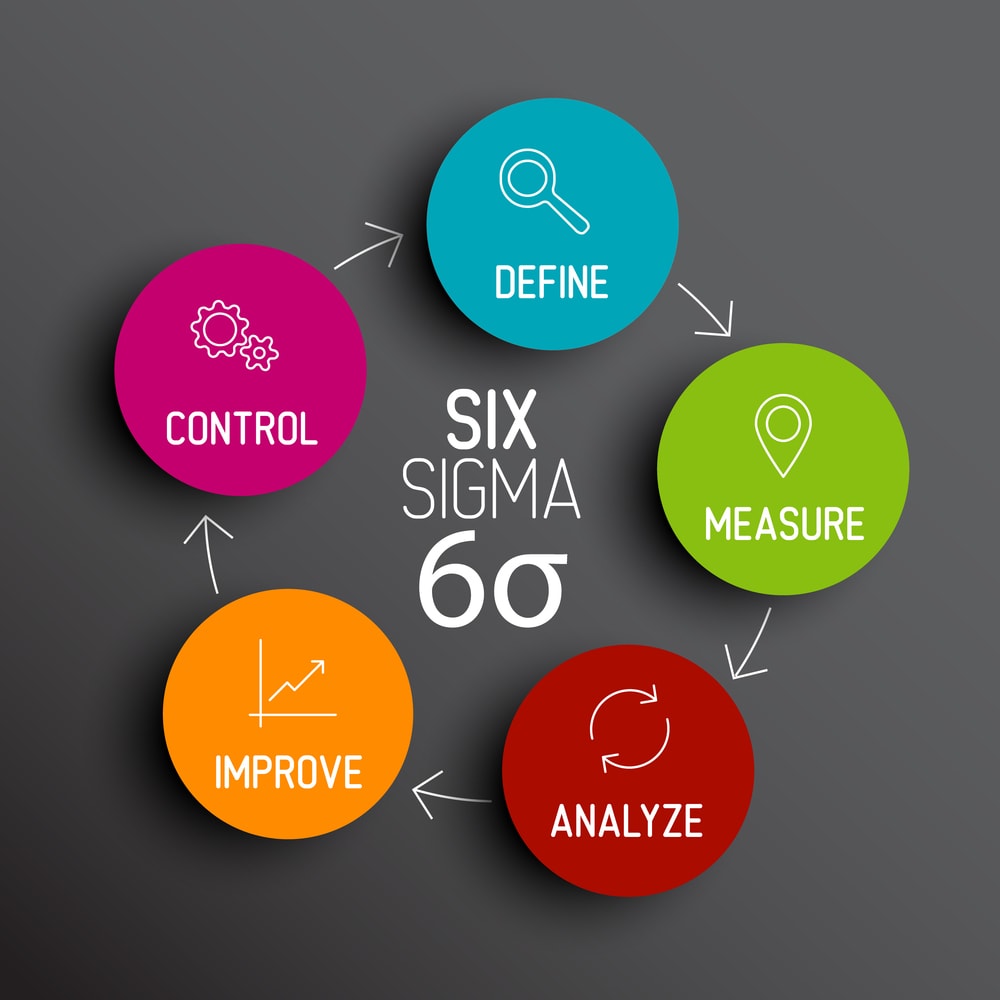If you are working in the quality management area, you must have heard Six Sigma Green Belt many times. Lean Six Sigma Courses, train the quality management professionals for the Six Sigma Green Belt Certification Exam. But what does Six Sigma stand for and how it defines quality? How does Six Sigma Green Belt will help you to climb the career steps? What are the characteristics of a successful Six Sigma Green Belt holder?
Attend our 100% Online & Self-Paced Free Six Sigma Training.
All of the answers to these and other questions are in our article. So read on and learn more about Six Sigma Green Belt now!
Six Sigma Green Belt: What is Six Sigma?
Six Sigma is a rigorous, focused and highly effective implementation of quality principles and techniques. Six Sigma methodology aims for virtually error free business performance. Six Sigma refers to the application of the scientific method to the design and operation of management systems and business processes which enable employees for creating value to customers and owners.
Six Sigma Green Belt is the level of certification under Six Sigma methodology. You can get this certification after getting the Lean Six Sigma Training and passing the exam. Six Sigma is one of the most important and popular developments in the quality field. Six Sigma is about helping the organization make more money by improving customer value and efficiency. Six Sigma is a long-term business strategy focused on the reduction of cost through the reduction of variability in products and processes.
Check our Six Sigma Training Video
Six Sigma Green Belt: What is Sigma?
Sigma (σ) is an eighteenth letter in the Greek alphabet used by statisticians to measure the variability or variation in any process. A company’s performance is measured by the sigma level of their business processes. Six Sigma is a statistical definition of how far a process deviates from perfection.
What is the Background of Six Sigma?
Six Sigma’s magic is not in statistical or high-tech razzle-dazzle. Six Sigma relies on tried and true methods that have been around for decades. In fact, Six Sigma discards a great deal of the complexity that characterized Total Quality Management (TQM). There was over 400 Total Quality Management (TQM) tools and techniques. Six Sigma takes a handful of proven methods and trains a small cadre of in-house technical leaders, known as Six Sigma Master Black Belt, Six Sigma Black Belt, Six Sigma Green Belt and Six Sigma Yellow Belt.
It would be a mistake to think that Six Sigma is about quality in the traditional sense. Quality, defined traditionally as conformance to internal requirements, has little to do with Six Sigma.

How Does Six Sigma Define ‘Quality’?
For Six Sigma purposes, quality can be defined as “the value added by a productive endeavor”. Quality here comes in two flavors: Potential Quality and Actual Quality. Potential Quality is the known maximum possible value added per unit of input. The actual quality is the current value added per unit of input. The difference between potential and actual quality is ‘waste’. Six Sigma focuses on improving quality (i.e., reducing waste) by helping organizations produce products and services better, faster and cheaper
The essence of Six Sigma methodology is to solve problems that are impacting business performance. It has saved a huge amount of money and improved the customer experience for a large number of organizations across the world, yet it is applied in an inconsistent and often reductive fashion in many companies. This has led to criticism in the literature and a number of abandoned implementations.
Although many proponents of Six Sigma stress the uniqueness of the approach, it is, in fact, part of a continuing evolution of thinking in what might broadly be called “Quality”. It is important to see Six Sigma within this wider context.
Six Sigma’s Problem Solving Framework
Six Sigma’s most common and well-known methodology is its problem-solving D-M-A-I-C framework. D-M-A-I-C is an acronym that stands for Define, Measure, Analyze, Improve and Control. In other words, D-M-A-I-C is the classic Six Sigma problem-solving process. The roadmap to D-M-A-I-C starts with defining an improvement project. Therefore; the first phase that we are going to look at in DMAIC framework is ‘DEFINE’ phase.
Traditionally, the D-M-A-I-C approach is to be applied to a problem with an existing, steady-state process or product and/or service offering. In Six Sigma methodology, variation is the enemy. It means variation from customer specifications in either a product or process is the primary problem.

DMAIC builds on three fundamental principles:
- Results-focused; driven by data, facts, and metrics
- Work is project-based (short-term in nature, with length depending on scope and complexity) and project-structured, versus an ongoing process
- Inherent combination of tools-tasks-deliverables linkage that varies by step in the method
Variation can take on many forms. DMAIC resolves issues of defects or failures, deviation from a target, excess cost or time, and deterioration. Six Sigma reduces variation within and across the value-adding steps in a process. DMAIC identifies key requirements, deliverables, tasks, and standard tools for a project team to utilize when tackling a problem.
All About Six Sigma Green Belt Certified Personnel
The Six Sigma Green Belt operates in support or under the supervision of a Six Sigma Black Belt, analyzes and solves quality problems, and is involved in quality improvement projects. A Six Sigma Green Belt has at least three years of work experience and wants to demonstrate his or her knowledge of Six Sigma tools and processes.
Six Sigma Green Belt certified personnel practices project management on a part-time basis. They are likely to spend 25 to 50 percent of their time towards Six Sigma projects and the remainder working in their primary functional area.
Six Sigma Green Belt is the soul of the Six Sigma team. Six Sigma Green Belt personnel makes projects work by contributing to data collection and analysis efforts. Six Sigma Green Belt is are often called upon to participate in Six Sigma projects that improve the process they work with every day.
Six Sigma Green Belt is a potential team leader, and they are given the opportunity to develop leadership skills by facilitating brainstorming sessions and taking the lead on parts of the project.
The Six Sigma Green Belt certified personnel leads the project team in improving the process. He or she is responsible for delivery of the project outcomes and for facilitating the team through the application of the DMAIC process.

What are the 5 characteristics of a successful Six Sigma Green Belt?
- Positive Thinker: They need to think positively. They are upbeat and optimistic about program success. They are self-confident without being overbearing or defensive.
- Risk Takers: They should believe in taking the risk.Six Sigma Green Belt is comfortable as a change agent, happy to be leading, pleased to be at the leading edge of change.
- Good Communicators: They has to be good communicators. As the technical hub of the team, a Six Sigma Green Belt certified personnel needs to communicate details of tools to less well-trained individuals. More importantly, change is difficult for every team member. They will need to listen to concerns and respond positively to ensure buy-in to the project methods and outcomes.
- Respected by peers: They are respected by their peers. Credibility is always the key for the certified personnel.
- Leaders: The certified personnel is the key or central player in the improvement and need to accept the leadership role.
Briefly, this is a certification to get if you are pursuing a career in quality management and the Online Free Six Sigma Training is a great starting point for learning all the basics.
Author: Nilesh Bhanushali



10 thoughts on “7 Facts About Six Sigma Green Belt Certification”
Comments are closed.